-
Sale!
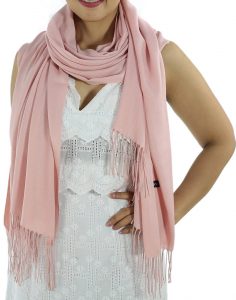
Cashmere Scarf | Cashmere Wrap | Cashmere Scarves
Original price was: $55.$33Current price is: $33. -
Sale!
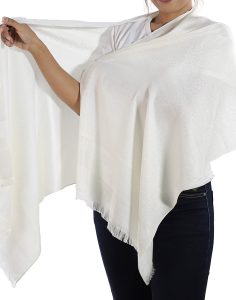
Silk Shawl | Silk Shawl Wrap | Silk Shawls
Original price was: $59.$39Current price is: $39. -
Sale!
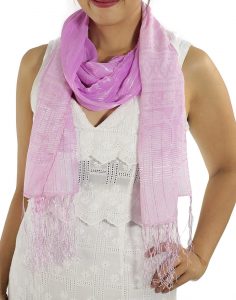
Silk Scarf | Silk Scarves | Silk Wrap
Original price was: $47.$27Current price is: $27. -
Sale!
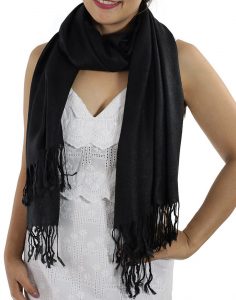
Pashmina Scarf | Pashmina Scarves | Pashmina Wrap
Original price was: $50.$33Current price is: $33. -
Sale!
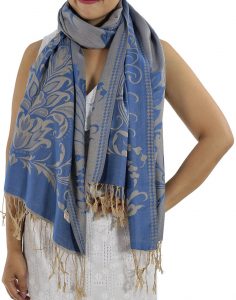
Patterned Pashmina Shawls | Pashminas Patterned Scarves | Patterned Pashmina Scarf
Original price was: $55.$35Current price is: $35. -
Sale!
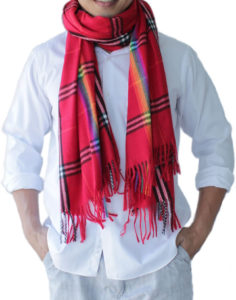
Mens Scarf | Scarf For A Man | Mens Shawls
Original price was: $55.$29Current price is: $29.
The History Of Silk Scarves
The scarf dates back at least as far as ancient Rome where it was called sudarium (Latin term for “sweat cloth”) and was used by Romans to wipe their necks and faces. But the sudarium soon became a fashion accessory for both men and women, whether it was knotted to a belt or worn round the neck.
Experts claim that the scarf was made of cloth rather than wool and initially, it indicated the rank of the warriors in the Chinese Emperor Cheng (Shih Huang Ti). Moreover, the 17th century brought a wider scale use of scarves as they were very often used by Croatian mercenaries. Again, those scarves were not made of wool but ordinary cotton in the case of ordinary soldiers and the officers wore silk.
The elegant “Croatian style” enamoured the French who were thrilled with the fashion innovation and started wearing scarves too. The French called the scarves cravatas from the Croatian word kravata. A scarf was also used to show one’s political inclination by its color and as such, became extremely popular. In the 18th century, men and women alike wore neckerchiefs, no matter of the social class they belonged to and the trend rapidly grew on people and even reached Norway.
In the 19th century, the cravat became again a fashion accessory for men and a basic item in every man’s wardrobe. The major supplier of silk scarves at that time was Sweden, mostly represented by merchants like K. A. Almgren and Casparsson & Schmidt, who supplied bands and ribbons as well as scarves in Norway, Finland and other countries. The first types of scarf or headscarf presented two small pleats or trimmed fringing. Around 1840, single or double-knotted fringes were extremely stylish and scarves were worn both as shawls and headwear.
Needless to say that the 20th century saw different types of scarves inspired by the old trends and combined with the new ones. Even though interesting in design, scarves seem to have been forgotten for a while. Well, now they are back and let me say that their future looks to be secure enough as they present huge opportunities in what “playing” with colors and patterns is concerned. Knitting and weaving techniques are struggling to fulfill the demands of the fashion designers.
The most popular are the silk scarves. The exquisite nature of the material makes them provide endless possibilities for enhancing your wardrobe. Silk scarves range from lightweight to delicate and gossamer light (chiffon scarves and chiffon wraps) and can be worn in many different ways like, for an example, as a head covering, a belt, sashes, an accent piece or just like a shawl. Whether you want to add a subtle and refined nuance or flair to cut a dash with your wardrobe, silk scarves are just the thing to accomplish your desire.
But what makes silk scarves so special? I guess it’s the fact that their made of silk. Silk was, for centuries, given the reputation of a luxurious and sensuous fabric, associated as such with wealth and success. To understand why is silk so highly appreciated, let’s see some of its attributes.
Silk:
-Is porous, permitting it to breathe and absorb moisture. Consequently, it is cool in the summer and warm in the winter.
-Is easy to dye and beautifully takes on deep colors like the bright, iridescent ones that are brilliant in effect or appearance. What’s even greater is that most often, silk prints look on the back side almost as good as on the front side.
-Creates luster and beauty as its smooth fiber enables it to reflect light and give it a silky feel and improving one’s look as it drapes beautifully and retains its shape.
